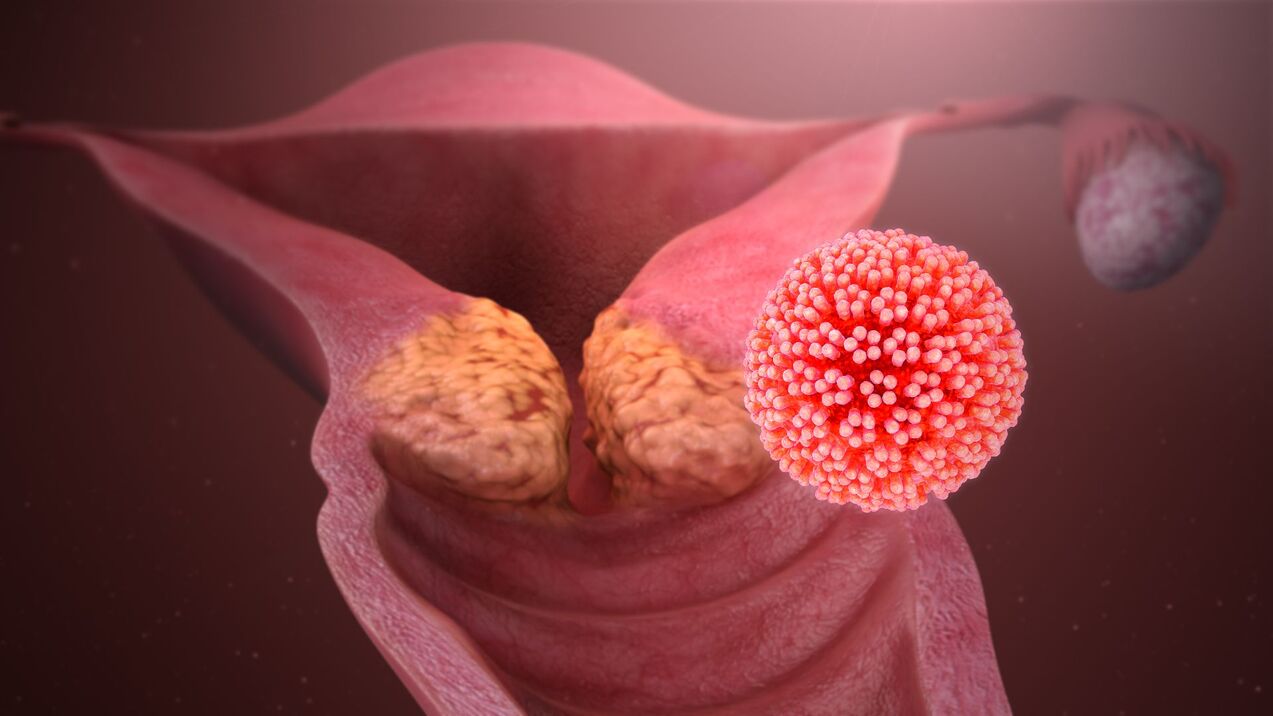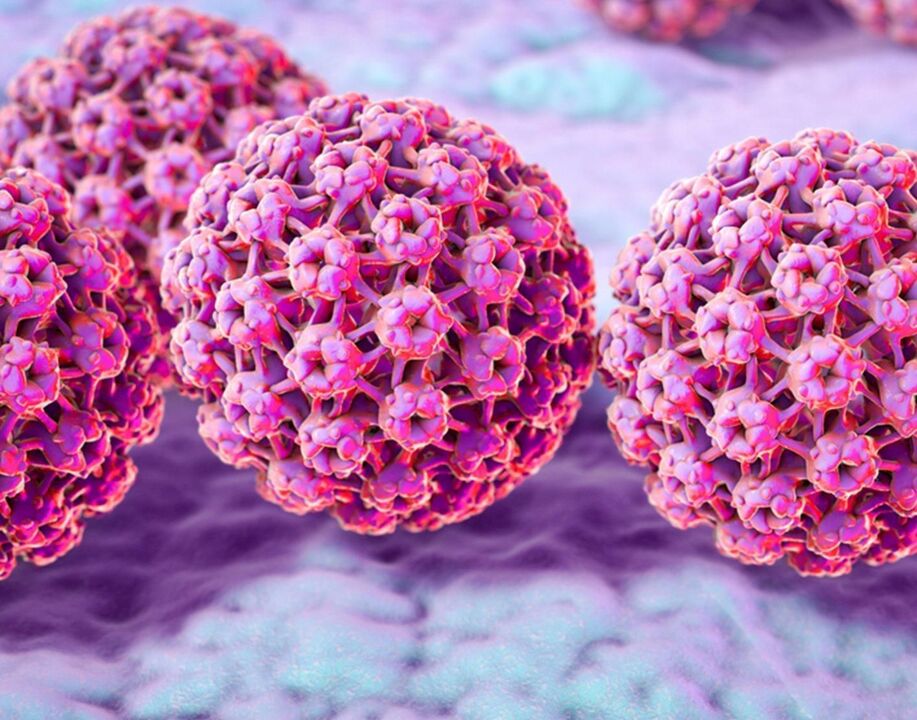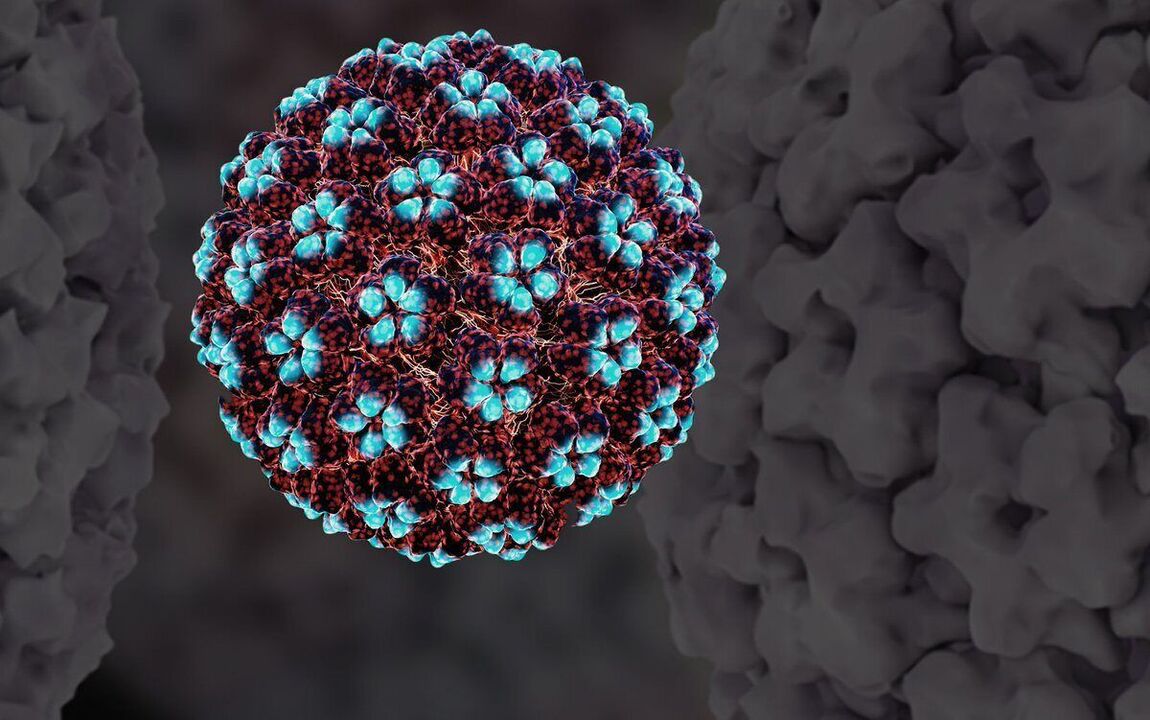Human papilloma virus (HPV) is a very common sexually transmitted infection worldwide.
What is remarkable for this infection is that it may not manifest itself for many years, but eventually lead to the development of benign (papilloma) or malignant diseases (cervical cancer) of the genital organs.

Types of human papilloma virus
More than 100 types of HPV are known. Different types of virus are strange "subspecies". Varieties are named by assigned numbers as they are found.
The oncogenic high risk group is composed of 14 types: 16, 18, 31, 33, 35, 39, 45, 51, 52, 56, 58, 59, 66, 68 (these types are associated with the development of cervical cancer).
In addition, low-risk oncogenic types (primarily 6 and 11) are known. They lead to the formation of anogenital warts (genital warts, papillomas). Papillomas are located on the mucosa of the vulva, vagina, in the perianal region, on the skin of the genital organs. They almost never become malignant, but result in significant cosmetic defects in the genital area. This type of virus may cause warts on other parts of the body (hands, feet, face), or they may have a different origin. In later sections, we will discuss the "high-risk" and "low-risk" HPV types separately.
Human papilloma virus infection
The virus is transmitted primarily through sexual contact. Almost all women become infected with HPV sooner or later: up to 90% of sexually active women will get this infection in their lifetime.
But there is good news: the majority of infected people (about 90%) will get rid of HPV without any medical intervention within two years.
This is the normal course of the infectious process caused by HPV in the human body. This is enough time for the human immune system to get rid of the virus completely. In such a case, HPV will do no harm to the body.That is, if HPV was discovered some time ago, and now it is not, this is absolutely normal!
It must be remembered that the immune system in different people works at "different speeds". In this regard, the speed of getting rid of HPV can be different for sexual partners. Therefore, a case can be made when HPV is detected in one of the partners, and not in the other.

Most people become infected with HPV shortly after becoming sexually active, and many people will not know that they have been infected with HPV. Permanent immunity is not formed after infection, therefore, the same virus that has already been discovered can be re - infected, as with other types of the virus.
"High-risk" HPV is dangerous because it can lead to cervical cancer and some other types of cancer. "High-risk" HPV does not cause other problems.
HPV does not contribute to the development of inflammation of the mucous membrane of the vagina / cervix, menstrual irregularities or infertility.
HPV does not interfere with the ability to conceive and carry a pregnancy.
A baby is not transmitted "high-risk" HPV during pregnancy and birth.
Diagnosis of human papilloma virus
HPV testing for high-risk oncogenic risk before age 25 (except for women who start sexual activity early (before age 18)) is not worth it, as virus detection is unlikely at this time. leave the body alone.
After 25 - 30 years, it makes sense to analyze:
- together with cytological analysis (PAP - test). If there are changes in the PAP - test, and "high - risk" HPV, then special attention is needed to this situation;
- Attention must also be paid to the long-term durability of "high-risk" HPV in the absence of cytological changes. Recently, the sensitivity of the HPV test for prevention of cervical cancer has been shown to be higher than the sensitivity of cytology, so the determination of HPV alone (without cytology) has been approved as an independent study for the prevention of cervical cancer. in the United States. However, in our country, an annual cytological examination is recommended, so a combination of these two studies seems reasonable;
- after treatment of dysplasia / prevalence / cervical cancer (absence of HPV in the analysis after treatment almost always indicates successful treatment).
To perform the study, it is necessary to obtain a smear from the cervical canal (the material can be studied from the vagina, however, as part of the screening, it is recommended to remove the material from the cervix).
The analysis must give:
- 1 time per year (if "high risk" HPV has been previously detected, and the analysis is given along with a cytological examination);
- 1 time in 5 years if previous analysis was negative.
It is almost impossible to analyze for low-risk oncogenic HPV. If there are no papillomas, this analysis does not make sense in principle (the virus can be carried, there is no treatment for the virus, so it is not known what to do with the result of the analysis).
If there are papillomas, then:
- they are most often caused by HPV;
- they must be destroyed regardless of whether or not we get 6/11 varieties;
- if we take smears, then directly from the papillomas themselves, and not from the vagina / cervix.
There are tests to detect different types of HPV. If you are tested for HPV periodically, pay attention to the specific types included in the analysis. Some laboratories only research types 16 and 18, others - all types together. It is also possible to perform a test that will identify each of the 14 types of "high risk" viruses in a quantitative format. Quantitative characteristics are important for predicting the likelihood of developing cervical prostate cancer. These tests should be used in the context of cervical cancer prevention and not as a stand-alone test. Analysis of HPV results without cytology (PAP testing) often does not allow any conclusions to be drawn about the patient's health status.
There is no such analysis that will determine whether or not the virus will "leave" in a particular patient.

Treatment of human papilloma virus
There is no medical treatment for HPV. There are treatments for conditions caused by HPV (papillomas, dysplasia, pre-cancer, cervical cancer).
This treatment should be carried out using surgical methods (cryocagulation, laser, radioknife).
There are no "immunostimulants" associated with the treatment of HPV and they should not be used. None of the drugs widely known in our country have passed adequate tests to show their effectiveness and safety. These drugs are not included in any of the protocols / standards / recommendations.
The presence or absence of "erosion" of the cervix does not interfere with the tactics of HPV treatment. You can read more about those situations where corrosion needs to be treated in the article "Corrosion or not corrosion? ".
If the patient has no complaints, and there are no papillomas / changes in the cervix during colposcopy and according to the PAP test, medical procedures are not required.
It is only necessary to repeat the analysis once a year and monitor the condition of the cervix (annual PAP test, colposcopy). In most patients, the virus "leaves" the body alone. If it does not go away, it is not at all necessary for it to lead to the development of cervical cancer, but it does need to be controlled.
Sexual partners do not require treatment (except in cases where both partners have genital papillomas).
Prevention of human papillomavirus infection
Vaccines that protect against HPV types 16 and 18 have been developed (one of the vaccines also protects against types 6 and 11). HPV types 16 and 18 account for 70% of cases of cervical cancer, which is why protection against them is so important. Routine vaccination is used in 45 countries worldwide.
condom (does not provide 100% protection).
The only way to provide 100% protection is to abstain from sexual intercourse. I'm not campaigning for it in any way, I'm just thinking.














































































